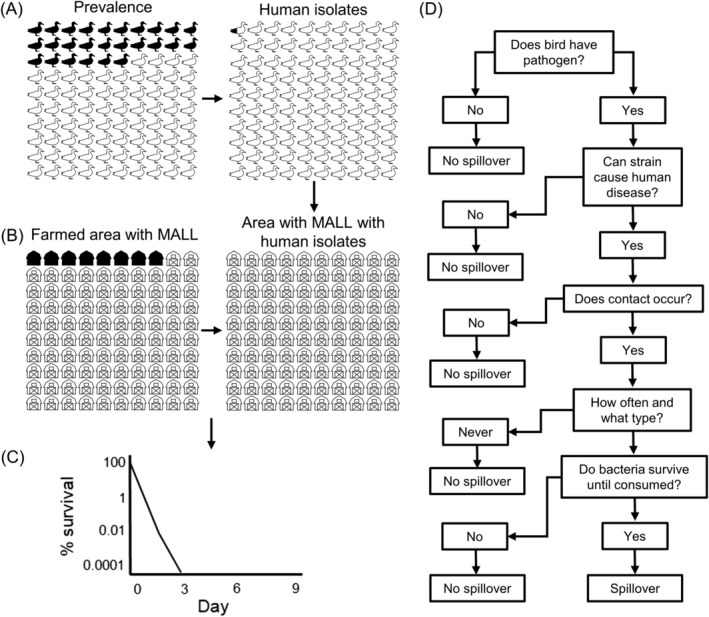Figure 2.

Conceptual diagram of likelihood of Campylobacter spp. spillover from mallards (MALL) to humans. (A) Campylobacter spp. prevalence in mallards estimated from meta‐analysis (26%) on left and prevalence of Campylobacter isolates matched with human disease cases estimated from Colles et al. (2011) (26% prevalence of which 0.9% of isolates are known to cause human disease) on right. (B) Estimated prevalence of mallards in farmland from Smith et al. (2019) farm bird database (8.3% of points) on left and area likely to have mallards with human isolates on left (about 2 in 10000). (C) Estimated survival time of Campylobacter spp. in mallard faeces modified from Canada goose faeces study in Moriarty et al. (2012). (D) Flow chart to determine whether spillover will occur.
